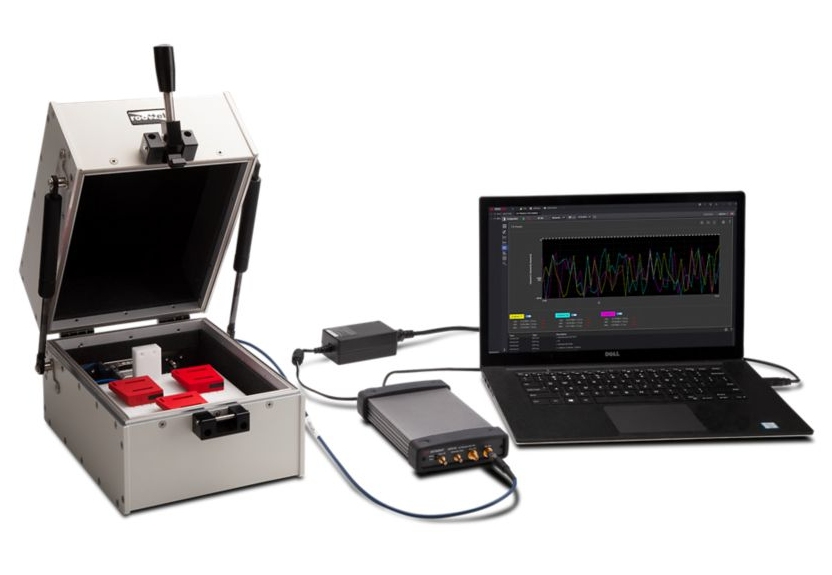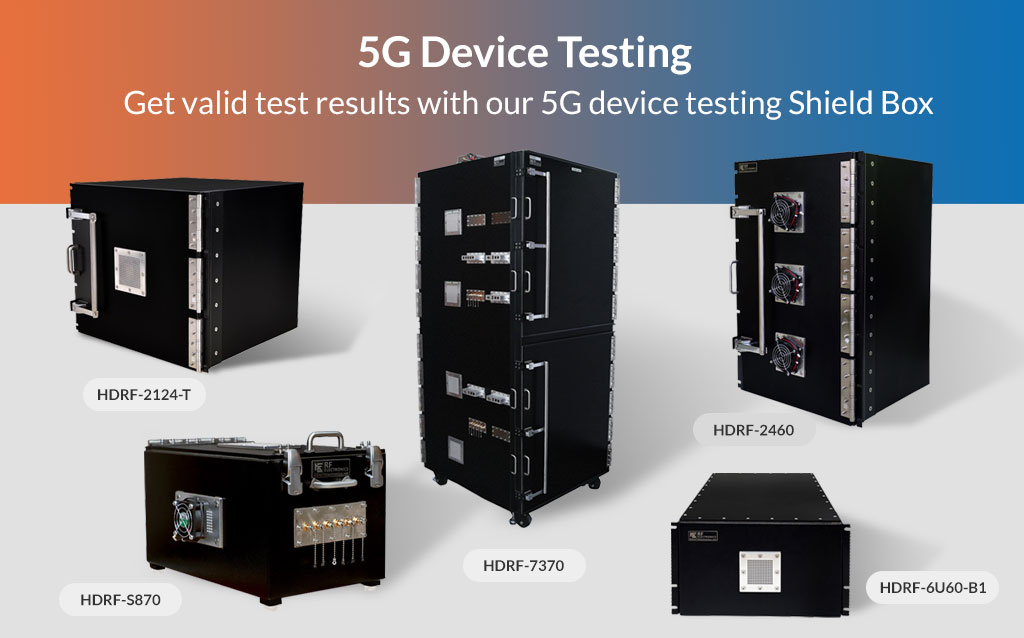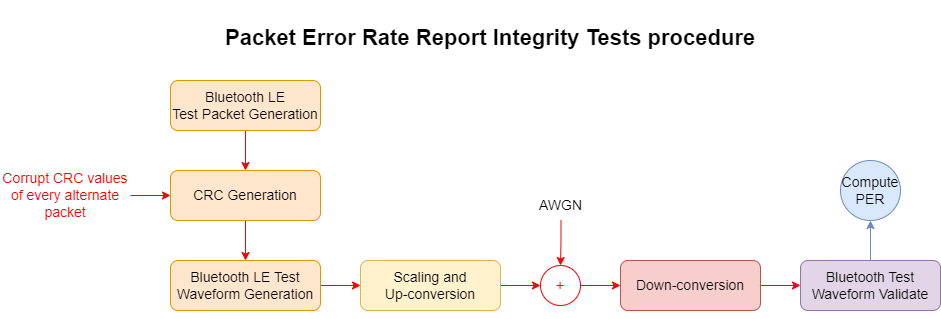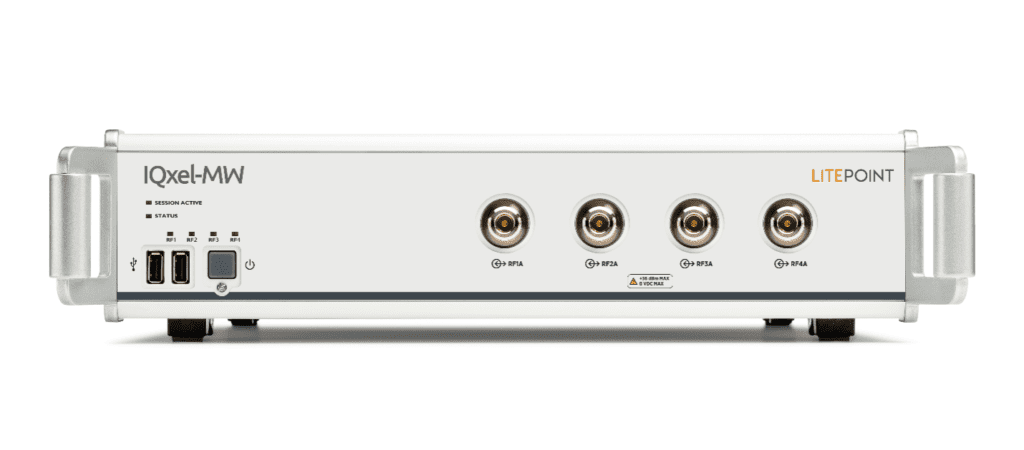Testing the wireless capabilities of IoT devices before production helps ensure reliable connectivity, optimal performance, and seamless integration across a wide range of applications. This article reviews key IoT wireless parameters and highlights Wi-Fi, 5G, and Bluetooth LE testing priorities. It also discusses how wireless testing supports optimal LPWAN and ZigBee IoT device functionality.
Analyzing key wireless parameters
Whether in homes, enterprises, or factories, IoT devices contend with multiple sources of interference that can degrade or corrupt wireless signal integrity. Analyzing key wireless parameters such as radio signal strength, coverage, latency, and throughput allows original equipment manufacturers (OEMs) to optimize connectivity for general and specialized deployments.
Energy efficiency is another crucial IoT device parameter, especially for low-power applications. Continuously transferring large datasets at high speeds can significantly drain power and reduce device operating time. Measuring power consumption across different wireless modes, environmental conditions, and transmission intervals allows OEMs to minimize power draw and extend battery life while maintaining reliable connectivity.

OEMs use a combination of advanced tools, such as over-the-air (OTA) and conducted signaling test platforms as shown in Figure 1, network and spectrum analyzers, environmental chambers, shield boxes, and battery test systems, to comprehensively evaluate the wireless capabilities of IoT devices.
AI-driven simulation platforms emulate real-world network and environmental conditions, automate test case generation, and analyze performance and power consumption patterns. Typically spanning multiple wireless protocols, these tests help ensure secure and seamless interoperability and compliance with international safety and spectrum regulations.
The basics of Wi-Fi testing: from performance to security
Wi-Fi is one of the most widely implemented wireless protocols for IoT devices. Testing includes:
- Functionality: assesses connection stability and signal integrity. Verifies incoming and outgoing transmissions stay within designated frequency spectrums without causing or incurring interference
- Performance: evaluates throughput, range, and network capacity under various conditions, including multiple IoT devices operating simultaneously on the same Wi-Fi network
- Security: assesses the implementation of encryption protocols, such as WPA3, device authentication mechanisms, and secure firmware updates
- Wi-Fi 6E and Wi-Fi 7: tests low-power and performance features supported by these newer Wi-Fi versions: Target Wake Time (TWT) for power efficiency, Multi-Link Operation (MLO) for improved throughput, and 6 GHz spectrum used for reduced interference
- Compliance: confirms adherence to FCC and international regulatory standards for spectrum allocation, transmission power limits, and other operational guidelines. Wi-Fi certification verifies compliance with the Wi-Fi Alliance

Figure 2. The LitePoint IQxel-MW comprehensive wireless test solution features multiple RF ports for simultaneous signal analysis of IoT Wi-Fi, Bluetooth, and LPWAN connectivity. (Image: Litepoint)
Testing different 5G standards: from URLLC to Redcap
Much like Wi-Fi, 5G IoT device testing, depicted in Figure 3, spans compatibility, functionality, performance, security, and compliance. Many OEMs also test the capabilities of specific 5G standards.

For example, 5G NR testing may cover industrial automation infrastructure requiring high reliability, network slicing to prioritize emergency services, smart city infrastructure for wide-area coverage, and enhanced mobile broadband (eMBB) applications that demand increased throughput. Additional testing of 5G standards can include:
- mmWave assesses line-of-sight performance and susceptibility to obstacles, along with throughput, in dense user and urban environments. It also evaluates latency and jitter, ensuring real-time responsiveness for high-bandwidth, low-latency applications such as smart security cameras and traffic management infrastructure.
- Sub-6 GHz: evaluates coverage range and performance in urban and rural deployments. Assesses scalability to verify stable connections for smart meters, traffic sensors, connected streetlights, and precision agriculture while testing signal integrity and interference handling to maintain reliable connectivity in mixed-spectrum environments.
- Reduced Capability (RedCap) measures power consumption across different transmission modes, optimizing energy efficiency for low-power IoT devices such as wearable health monitors, environmental sensors, and connected security devices. It also evaluates coverage performance and assesses data rates for moderate throughput requirements.
- Ultra-Reliable Low-Latency Communication (URLLC): verifies latency of less than one millisecond to minimize delays for mission-critical medical, industrial, and autonomous applications.
Fine-tuning BLE parameters
The Bluetooth LE protocol supports many different IoT devices, from wearable fitness and health trackers to smart home sensors, keyboards, mice, and earbuds. Wireless testing typically focuses on the following:

- Protocol analysis: analyzes Bluetooth LE communication and security protocols. Captures and examines Bluetooth packets (Figure 4) verifying implementation, including adaptive frequency-hopping (AFH) in the 2.4 GHz ISM band and Gaussian Frequency Shift Keying (GFSK) modulation with symbol rates of 1 or 2 Msym/s.
- Radio frequency (RF): assesses wireless transmission characteristics such as signal strength, modulation quality, and frequency stability under various conditions. Confirms efficient, intermittent data transmission patterns, evaluating signal integrity and interference handling to maintain reliable performance, particularly in deployments with overlapping wireless signals from Wi-Fi, classic Bluetooth, and ZigBee.
- Interoperability: verifies that Bluetooth devices communicate seamlessly with products from different manufacturers. Ensures that BLE devices meet Bluetooth SIG standards, comply with regulatory requirements, and obtain certification from a Bluetooth Qualification Test Facility (BQTF).
Ensuring LPWAN reliability and resilience
Targeting IoT connectivity and machine-to-machine (M2M) communications, Low-Power Wide-Area Network (LPWAN) testing typically covers:
- Environmental challenges: evaluates signal and data integrity under various environmental conditions, such as rain, snow, and high winds. Testing these parameters is particularly crucial for outdoor IoT devices, such as those used in precision agriculture, smart water meters, and environmental monitoring stations.

Figure 5. The LoRaWAN Field Test Device from IQnexus evaluates signal strength, packet loss, and network parameters in real-world conditions for IoT deployments. (Image: IQNexus) - Coverage and range: confirms signal strength and integrity in various deployment scenarios: 1-3 miles (2-5 km) in rural areas and up to 9 miles (15 km) in dense urban areas. Notably, LPWAN technologies like LoRaWAN can achieve ranges exceeding 60 miles (100 km) in rural environments and optimal conditions.
- Protocol and device compatibility: verifies specific implementations of LPWAN data and security protocols, from LoRaWAN and NB-IoT to LTE-M and Sigfox.
- Performance: analyzes power consumption, data rates, latency, and device density. LoRaWAN testing targets low-density areas, and NB-IoT/LTE-M focuses on high-density regions.
- Interference: evaluates collision detection and spectrum congestion in unlicensed bands to maintain reliable communication (Figure 5) despite overlapping signals. Tests licensed bands, such as LTE and 5G, confirm minimal interference and stable performance.
Evaluating coverage and range for ZigBee mesh networking
Designed for short-range, mesh networking, ZigBee testing of IoT devices (Figure 6) spans:
- Protocol compliance: verifies adherence to the ZigBee communication protocol, ensuring compliance with industry standards for reliable, secure mesh networking. These tests focus on packet formation, addressing, and routing capabilities.
- Coverage and range: evaluates coverage performance for indoor and short-range environments, measuring signal strength and assessing reliability in multi-hop mesh networks.
- Scalability: adds and removes devices, assessing the network’s ability to adapt to fluctuating node counts.
- Interference and interoperability: assesses ZigBee’s ability to handle interference, particularly in the crowded 4 GHz spectrum, while maintaining data and signal integrity. It tests collision avoidance, coexistence with other wireless protocols (including Wi-Fi and Bluetooth LE), and multi-vendor interoperability.
- Power efficiency: measures power consumption during active communication and sleep cycles.

Figure 6. An illustration of the ZigBee modulation process used in IoT testing, showing the steps from bit mapping to QPSK modulation to validate reliable communication in IoT devices. (Image: Rohde&Schwartz)
Conclusion
Comprehensively testing the wireless capabilities of IoT devices before production enables OEMs to optimize connectivity and performance while ensuring seamless interoperability across a wide range of applications. OEMs analyze key wireless parameters — such as signal strength, coverage, latency, throughput, and power consumption — for multiple wireless protocols, from Wi-Fi and 5G to Bluetooth LE, LPWAN, and ZigBee.
Related EE World content
How to Select an IoT Device Antenna
Where Are LPWAN Protocols Used?
What Are 5G’s, the Different Types, and How Are They Used?
Wi-Fi 7 and Private 5G Networks: Co-Existence or Competition?
Securing Devices for the IoT – Firmware, Software, and OTA
References
Wireless Testing Technology for Bluetooth, HBC Compliance
A Comprehensive Guide to Wireless Testing Strategies, Tessolve
What is Wireless Device Testing? Unveiling ThinkPalm’s Wireless Testing Process, ThinkPalm
Making The Right Connections: Understanding Bluetooth and Wi-Fi Testing, NextGen Technology
Wireless Device Testing and Certification Solutions, UL Solutions
IQxel-M4W for Wi-Fi and Bluetooth Testing, LitePoint
An Introduction to Wireless Technologies in IoT- LPWAN, Allion Labs
Bluetooth Low Energy (V5.0) RF-Test for Internet of Things Applications, Rohde & Schwarz
Bluetooth LE Packet Error Rate Report Integrity Tests, MathWorks
IEEE Innovation Testbed, IEEE






Leave a Reply